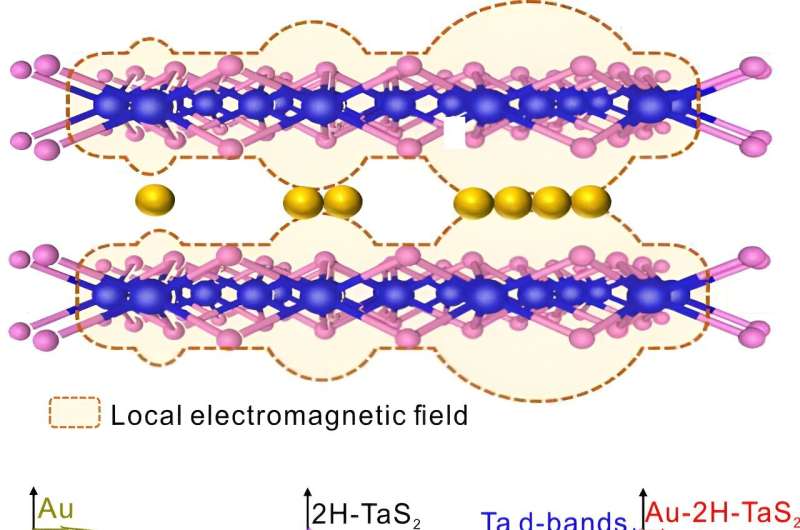This article has been reviewed according to Science X's editorial process and policies. Editors have highlighted the following attributes while ensuring the content's credibility:
fact-checked
peer-reviewed publication
trusted source
proofread
High-performance SERS substrate proposed based on 2H-TaS2 and single-atom-layer gold clusters

Recently, a research team led by Professor Yang Liangbao from Institute of Health and Medical Technology, Hefei Institutes of Physical Science (HFIPS), Chinese Academy of Sciences (CAS) proposed an electromagnetic field enhancement mechanism based on the near neighbor electron orbit coupling effect, explaining the mechanism of two-dimensional (2D) layered material Au-2H-TaS2 used for surface enhanced Raman scattering (SERS) enhancement.
The results were published in Journal of Physical Chemistry Letters.
2D materials are a hot topic in the field of analytical chemistry due to their potential as ideal metal-free surface-enhanced Raman spectroscopy (SERS) substrates. However, compared to precious metals, 2D materials have a relatively low enhancement factor (usually below 103) due to their mainly chemical enhancement mechanism.
Therefore, further research is needed on the mixed metal nanoparticle 2D material or chemically doped 2D material system and its SERS enhancement mechanism in order to achieve high SERS performance.
In this study, the team utilized single atom Au clusters to intercalate 2H-TaS2, achieving a SERS enhancement effect of two orders of magnitude relative to the parent 2H-TaS2.
In order to accurately elucidate the SERS enhancement mechanism of Au-2H-TaS2, a single atomic layer Au cluster intercalation bilayer 2H-TaS2 model was established, and an innovative electromagnetic field enhancement mechanism based on the coupling effect of neighboring electron orbitals was proposed.
Through experimental analysis and theoretical calculations, it has been shown that the d-orbital electrons on the Au surface are coupled with neighboring 2H-TaS2, increasing the local electron density, resulting in a strong local electromagnetic field.
This work provides new insights for SERS enhancement of nonprecious metal compounds and guides the development of new SERS substrates, according to the team.
More information: Shirui Weng et al, Near-Neighbor Electron Orbital Coupling Effect of Single-Atomic-Layer Au Cluster Intercalated Bilayer 2H-TaS2 for Surface Enhanced Raman Scattering Sensing, The Journal of Physical Chemistry Letters (2023). DOI: 10.1021/acs.jpclett.3c02225
Journal information: Journal of Physical Chemistry Letters
Provided by Chinese Academy of Sciences





















